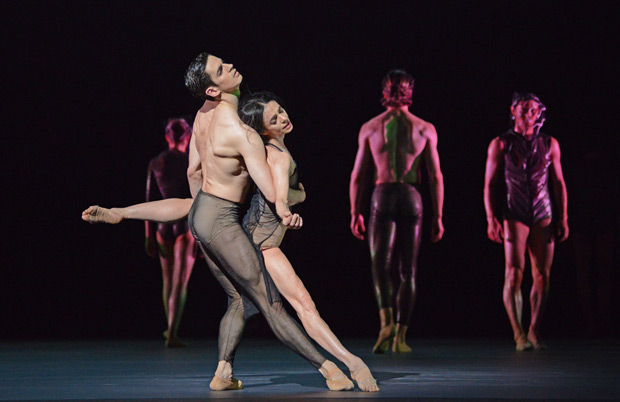
© Dave Morgan, courtesy the Royal Opera House. (Click image for larger version)
Lynette Halewood with her personal selection of London dance memories this last year…
What dance was memorable, for good or ill in 2015? Here are some thoughts on what particularly sticks in the mind from this year. Sometimes a performance which seems to have had its flaws at the time will still obstinately lodge itself in the memory, while others which were much praised at the time somehow fade away. This was a rather mixed year with some disappointments along the way and a number of goodbyes.
January

© Foteini Christofilopoulou. (Click image for larger version)
English National Ballet fielded a number of starry casts for their production of Swan Lake at the Coliseum. Alina Cojocaru was partnered by Ivan Vasiliev. It wasn’t the ideal pairing and a prince is not the role you would expect for him (he’s a convincing Spartacus battling the Romans, or a French revolutionary storming the barricades) but nevertheless this performance obstinately sticks in the memory. It’s interesting to see someone try to escape their typecasting, and he did play down the virtuoso tricks and looked like he really cared for his ballerina. Another reason to remember this was Cesar Corrales in the pas de trois. New to the company and still a teenager, he made us all sit up and take notice. The company as a whole were on fine form.
In the same week we had an all too brief visit from the Soloists of Royal Danish Ballet at the Peacock. Even if this was just a programme of excerpts to recorded music, it was a refreshing glimpse into another world. The choreography and dancing had real charm, a delicate vivacity, all Bournonville speed and springiness. Please, please come back and bring the entire company next time.

© Dave Morgan. (Click image for larger version)
Natalia Osipova was a stunning Tatiana in Onegin at the Royal Ballet. Her partner Matthew Golding couldn’t match her in passion in but nevertheless she had thought deeply about her interpretation and every tiny detail registered. We are lucky to have her. The same performance also saw the young Yasmine Naghdi and Matthew Ball as Olga and Lensky, a new pairing which boded well for the future.
February
Ballet Black has commissioned much interesting work in the last few years, regularly appearing in the Linbury at the Royal Opera House. Mark Bruce’s peculiar but decidedly memorable Second Coming must be one of the oddest. This was a complicated narrative, a kind of alternative creation myth, set to a wildly eclectic mix of music (Tom Waits, Elgar). There was a rebellion against God and a hula hooping angel. It was a bizarre and compelling mix.
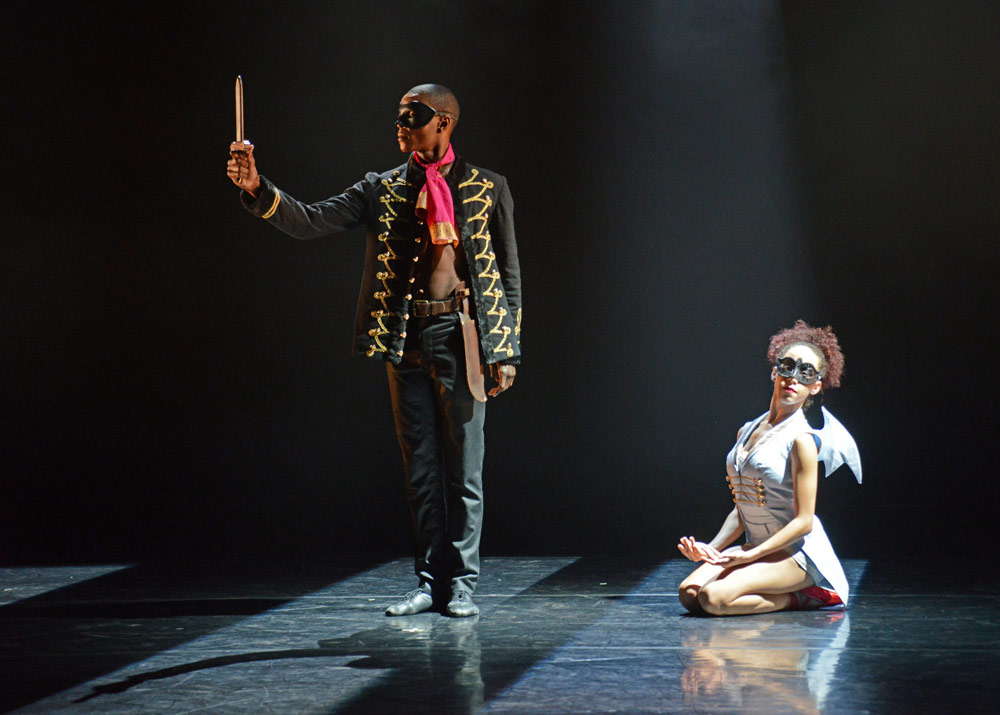
© Dave Morgan. (Click image for larger version)
Sadler’s Wells staged a mixed bill of commissions from three of their Associate Artists, Crystal Pite, Kate Prince and Hofesh Shechter. What looked tempting on paper turned out to be an unrewarding evening in the theatre, memorable mostly for the wrong reasons, with the honourable exception of Pite’s A Picture of you falling. The wonderful Tommy Franzen was wasted in SMILE – Prince’s overlong Charlie Chaplin impression. This should have been a great year for Hofesh Shechter, with this work (barbarians in love) , later expanded into a full evening piece for Sadler’s in the autumn, plus a commission from the Royal Ballet and work from the Royal Opera all keeping him very much in the public eye. But rather than moving his work onto to a new level, barbarians in love looked disappointingly messy and indulgent, and his other commissions failed to catch fire.

© Foteini Christofilopoulou. (Click image for larger version)
March
Dancers of the Royal Ballet put together a gala for a sad occasion, a fund to commemorate Anne Maguire, the murdered mother of soloist Emma Maguire. It was a well-constructed programme that avoided obvious gala items. Steven McRae contributed Czardas, a new extraordinary tap piece which qualifies as one of life’s guilty pleasures.
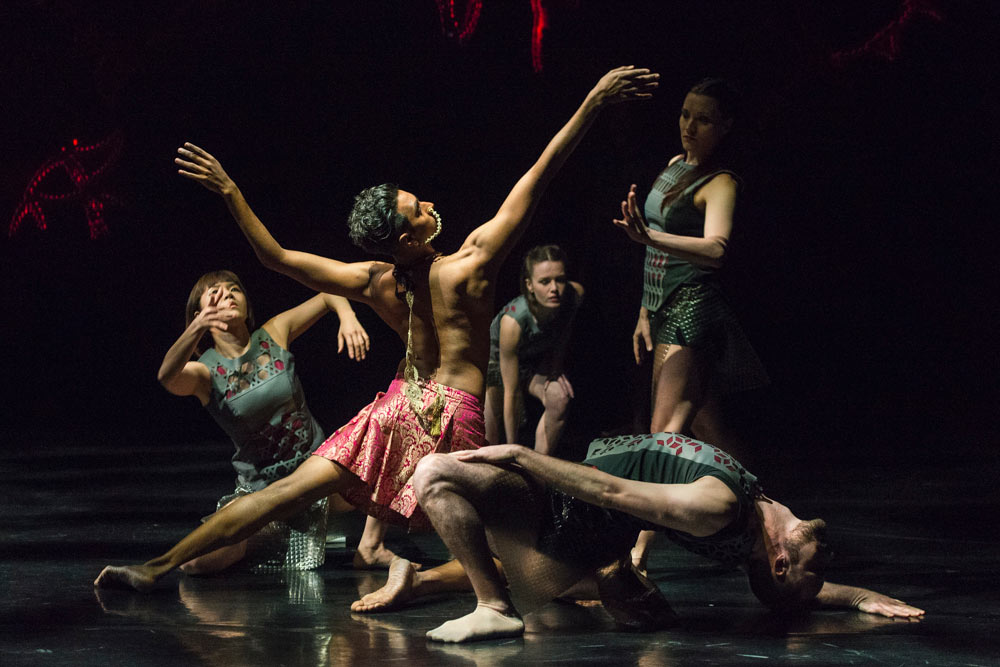
© Foteini Christofilopoulou. (Click image for larger version)
At the time it didn’t seem that Shobana Jeyasingh’s Bayadere – The Ninth Life in the Linbury was likely to figure in a list of memorable items. The idea was that she would provide a commentary on La Bayadere and its patronising 19th century view of Indian dance. It had its interesting moments, with details of the reactions in the west in the 19th century to visits from actual Indian temple dancers and how their “exoticism” was viewed. But it all rather fell away to no definite conclusion in the final third. Nevertheless it did feature an extraordinary transformation. Sooraj Subramaniam was the Indian blogger scornfully commenting on Bayadere and its fantasy of the oriental dancer, but then transformed himself into that imagined vision so completely he could have been a different creature. It was remarkable.

© Andy Ross. (Click image for larger version)
Scottish Ballet’s Streetcar Named Desire by choreographer Annabelle Lopez Ochoa and director Nancy Meckler returned to Sadler’s Wells. It’s a fluid and confident staging, and the company by now look completely at home in their roles. A complex narrative is clearly put across. Eve Mutso was a fine, damaged, needy Blanche. I’m sorry to hear she will be moving on at the end of the season. Dance works typically take place in real time in the stage. Streetcar is unusual in how it manages to compress time at some points to good effect. The handling of the burgeoning romance of Blanche with Mitch, the visits to the cinema and other outings, are presented as a series of successive vignettes which make their point perfectly.
April
Ashton’s sunny La Fille mal Gardee for the Royal Ballet is always guaranteed to brighten up your day. Laura Morera as Lise with Vadim Muntagirov making his debut as Colas was a particularly joyous combination. Morera excels in Ashton, but is a dancer who hadn’t always been used as much as she might. Finally this year has offered her some decent opportunities. Muntagirov is working his way through the Royal’s repertoire with considerable success, but there was something specially warm and charming here about his effortless way through the detail of the steps, and the interaction of the pair was a delight.
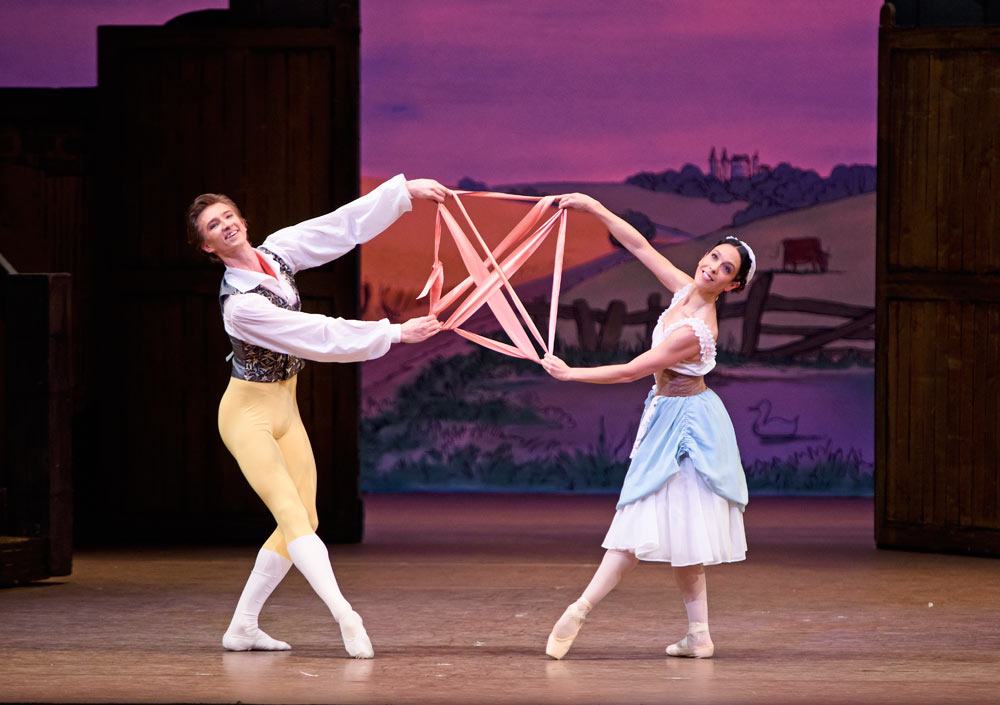
© ROH, Tristram Kenton (Click image for larger version)
May
Rather against expectations Wayne McGregor’s Woolf Works for the Royal Ballet was a big success. A three-act piece starring Alessandra Ferri, returning to the stage at 52 and referencing novels by Virginia Woolf. McGregor’s earlier Raven Girl had shown little ability to manage narrative or character (and it still didn’t in a puzzling revival later in the year). Nevertheless, the first and third sections of Woolf Works, featuring the magnetic Ferri as a Mrs Dalloway / Virginia Woolf figure, were gripping. Ferri had sympathetic support from her partners, Gary Avis and Federico Bonelli. McGregor’s huge address book of contacts turned up some excellent collaborators. A set of shifting frames from Ciguë for the first act offered a variety of perspectives to reflect the various voices of the original novel, and a beautifully phrased a voiceover from Gillian Anderson featured in the third. The second section however was McGregor as per frenetic usual, except this time Eric Underwood was in a dress. But Ferri was terrific and this was one of the Royal’s commissions I’d be keen to see again.

© Dave Morgan, courtesy the Royal Opera House. (Click image for larger version)
Northern Ballet’s mixed bill at the Linbury was very different from their usual fare of full-length narrative works. It’s a shame that they only seem to feel they can put these bills on in more modest venues. The most interesting item was The Architect by Northern Ballet dancer Kenneth Tindall, an ambitious and futuristic take on Adam and Eve with curious stretchy fabric designs. We expect to see more from him, now as a freelance artist.
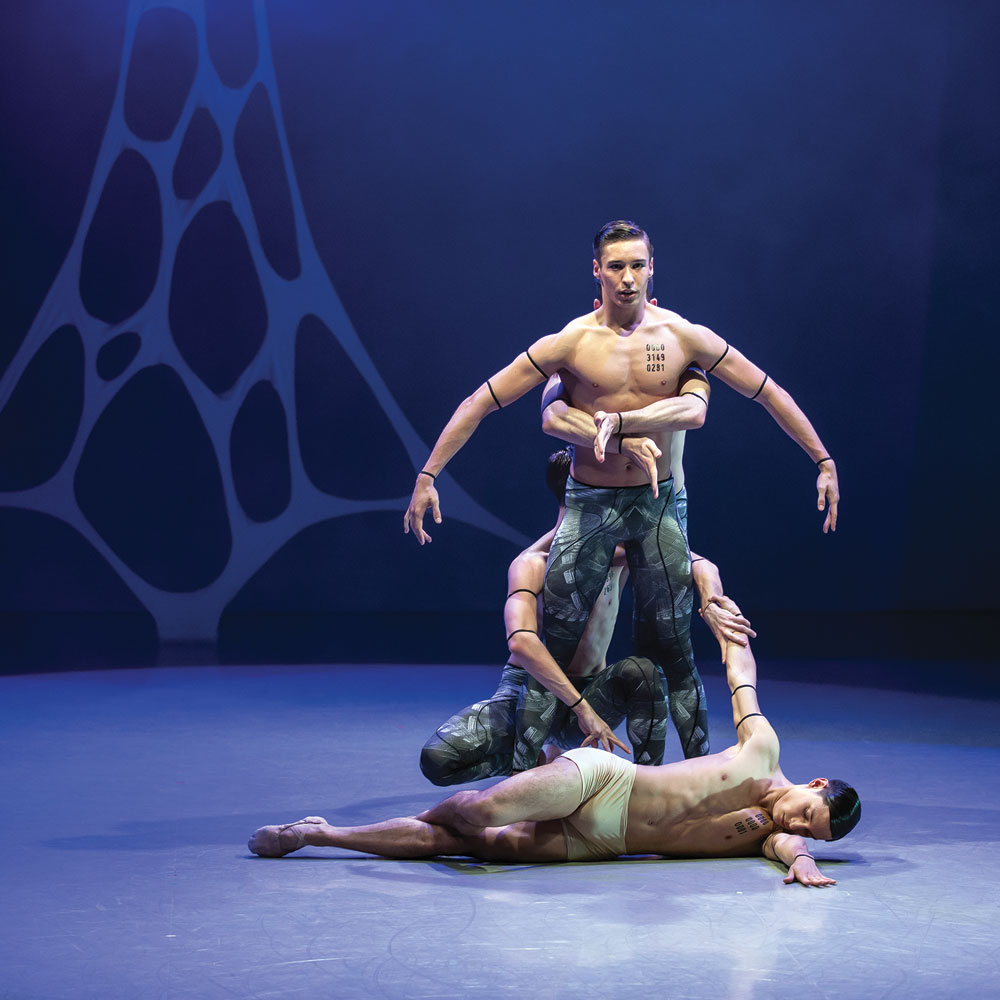
© Emma Kauldhar. (Click image for larger version)
June
Richard Alston Dance Company celebrated their 20th anniversary at the Place. The ever-elegant Jonathan Goddard returned as a guest for a new duet with Liam Riddick. Mazur was danced to a selection of Chopin Mazurkas, played onstage by Jason Ridgway whose concentration on and responsiveness to the dancers was exemplary. These two dancers are so accomplished they make Alston’s darting charges of direction and sudden swift turns in the air look easy and harmonious, a logical consequence of the music.
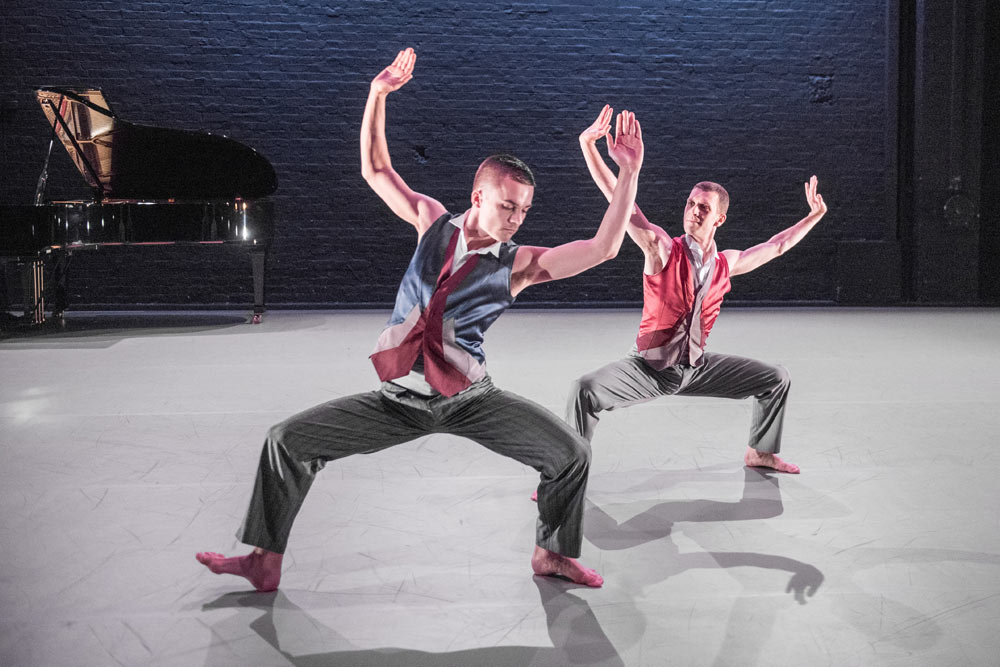
© Tony Nandi. (Click image for larger version)
Akram Khan and Israel Galvan faced off to one another again in a revival of last year’s Torobaca at Sadler’s Wells. They are both quite different but utterly compelling dancers in their different spheres (kathak/contemporary and flamenco). Khan may only dance for a couple more years, so take the opportunity to see him while you can. However it does feel slightly disquieting that a number of these memorable pieces this year are revivals or by already well established artists. We need some more investment in and opportunities for the emerging talents out there.

© Dave Morgan. (Click image for larger version)
July
The annual Royal Ballet School matinee this year looked more carefully curated than past years. One of the items was Ashton’s Lez Rendezvous in the original designs by William Chappell, danced by the youngest class of the Upper School. There’s been plenty of criticism of how poorly Ashton’s choreography is served in England but here at least there seemed to have been real effort put into the coaching of the production with elegant and buoyant dancing from the pupils.
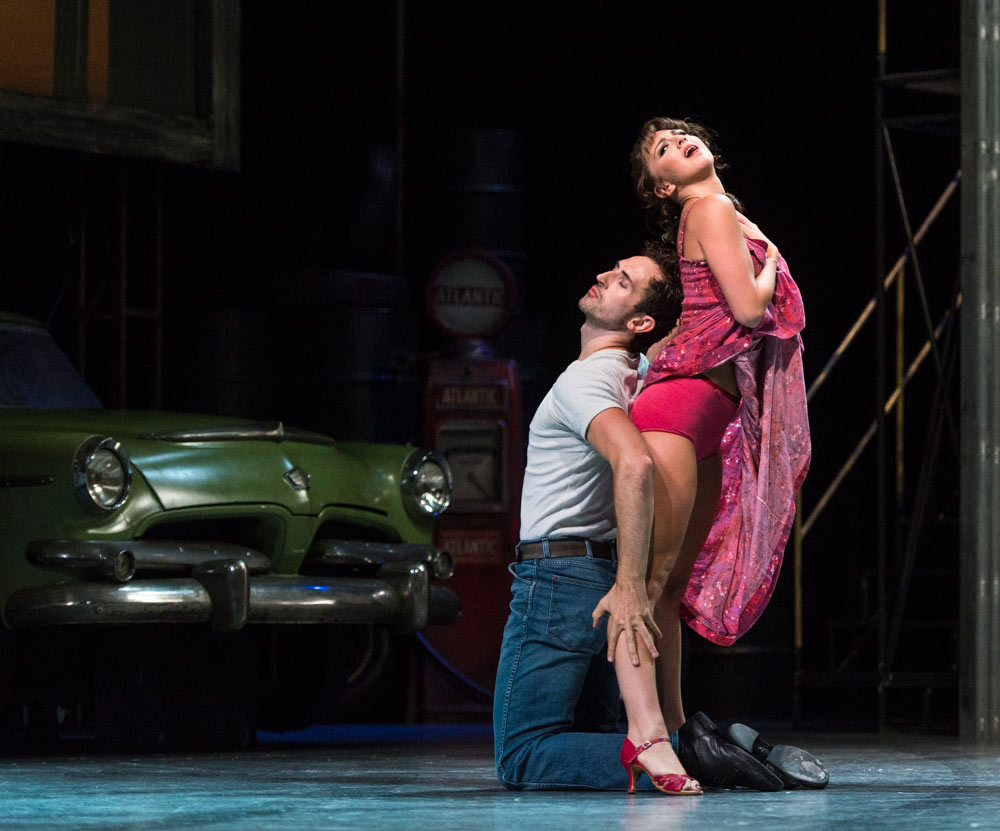
© Foteini Christofilopoulou. (Click image for larger version)
Matthew Bourne revived The Car Man at Sadler’s Wells. It’s one of his studies in Americana, crossing the plot of Carmen with the film The Postman Always Rings Twice. It was full of steamy heat, raging hormones and sweaty sexuality. Carlos Acosta’s messy take on the Carmen story later in the autumn for the Royal Ballet was pale and polite by comparison (though those weren’t the only things wrong with a big disappointment of the year).
Sylvie Guillem made her final farewell to London at the Coliseum, after earlier performances in Sadler’s in May, with her Life in Progress programme. This isn’t the strongest group of works she has ever toured. But as ever, she does it her way and chooses not to reprise any greatest hits but to commission new work. Mats Ek’s Bye where a woman surveys her surroundings and chooses to leave to join screened projections of family and friends is given piquancy by the occasion. Guillem redefined what the career of a female dancer could be and we will miss her.

© Gilles Tapie. (Click image for larger version)
August
There were no visits this summer from the Bolshoi or the Mariinsky and we felt the lack. Dutch National Ballet is an attractive company but their Cinderella from Christopher Wheeldon fell flat in July. The gap in the market in August was exploited by a visit from Queensland Ballet, now led by the ambitious Artistic Director Li Cunxin who is determined to raise its international profile. La Sylphide is its something of a rarity here now. This year saw a number of young dancers get shots at big roles, though the opportunity to dance James may have come a little too early for young Luke Schaufuss, on loan from Birmingham Royal Ballet.
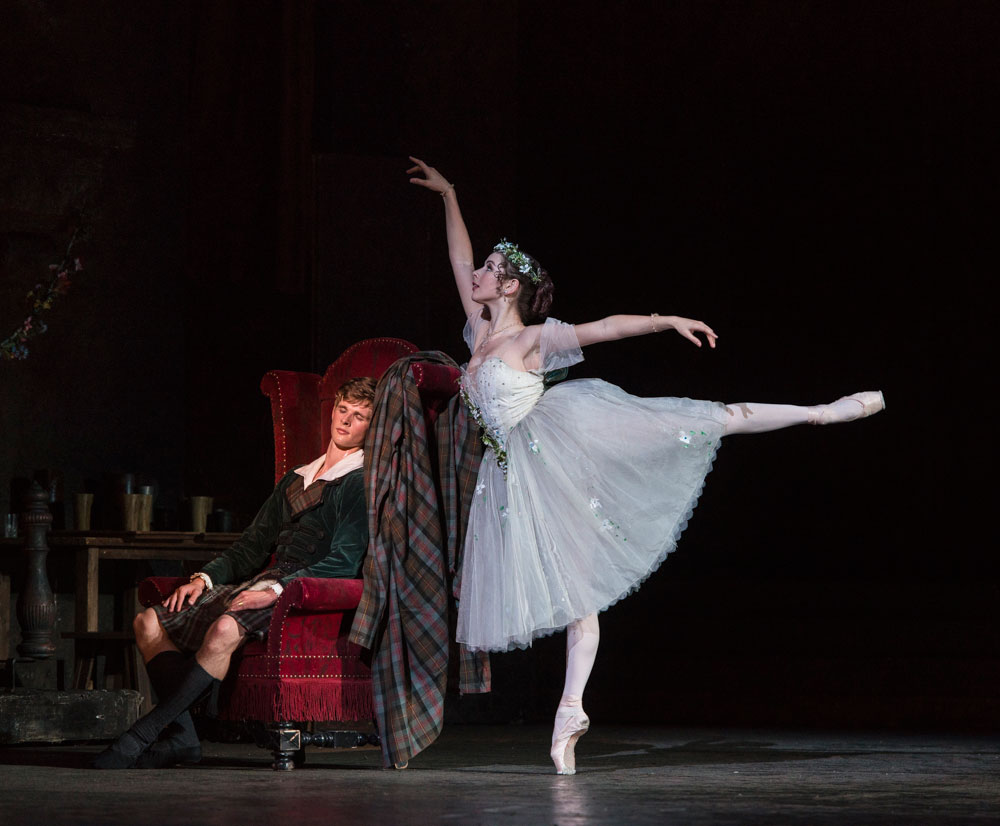
© Foteini Christofilopoulou. (Click image for larger version)
September
The all-male Les Ballets Trockadero de Monte Carlo (The Trocks) brought their wickedly funny parodies of classic ballet to the Peacock for two fun-filled weeks. Nothing cheers you up quite as much as the Trocks. Particular successes included Patterns in Space, a Merce Cunningham “tribute”, notable for its deadpan musicians carefully popping bubble wrap and supplying scene-stealing random noises. We were also treated to a version of Don Q which managed to pack all the highlights into about half an hour. Chase Johnsey was a stunning Kitri, nailing every technical challenge: a real ballerina.

© Zoran Jelenic. (Click image for larger version)
Seeta Patel’s Margam at the Purcell Room was her first full-evening performance of bharatanatyam, the classical Indian dance form. It was a concentrated, intense and intimate experience. The solo performance included narratives of love and devotion, with Patel morphing between Krishna and his would-be lover. It was notable for the rich interactions between the dancer and the musicians on stage.
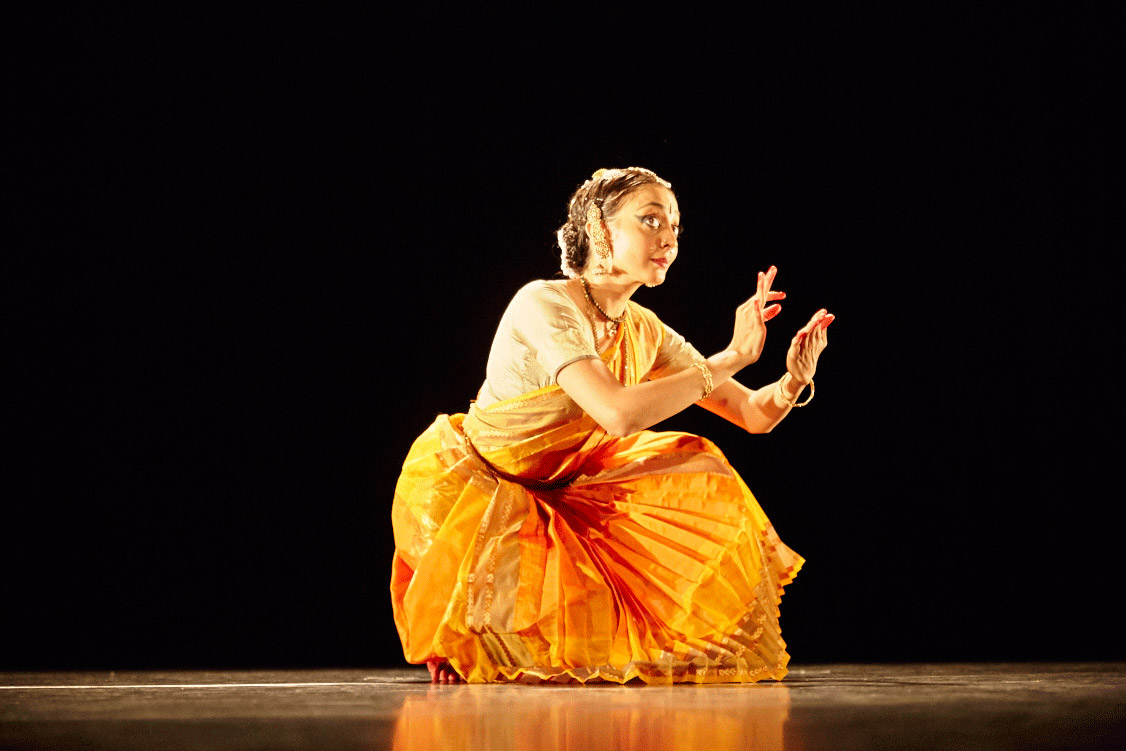
© Arnhel de Serra. (Click image for larger version)
After this month the Queen Elizabeth Hall and Purcell Room closed for renovations for the next two years. Once the Southbank Centre used to be a regular venue for dance, with ballet on at Christmas in the Royal Festival Hall. The QEH and smaller Purcell Room were useful venues for smaller companies that would struggle to fill larger venues like Sadler’s (and had some of the comfiest seats of any venue). With them out of action and with the Linbury Studio at the Royal Opera House closed for rebuilding after January, it will be increasingly difficult for smaller companies to find the right venue.
October
At the Royal Ballet, First Artist Matthew Ball and soloist Yasmine Naghdi made their debuts in MacMillan’s Romeo and Juliet to a general all-round purr of pure pleasure. The ballet looked fresher and brighter than it had in years. Her performance was particularly affecting. These two, and Francesca Hayward who also had a debut as Juliet, give us considerable hope for the future.
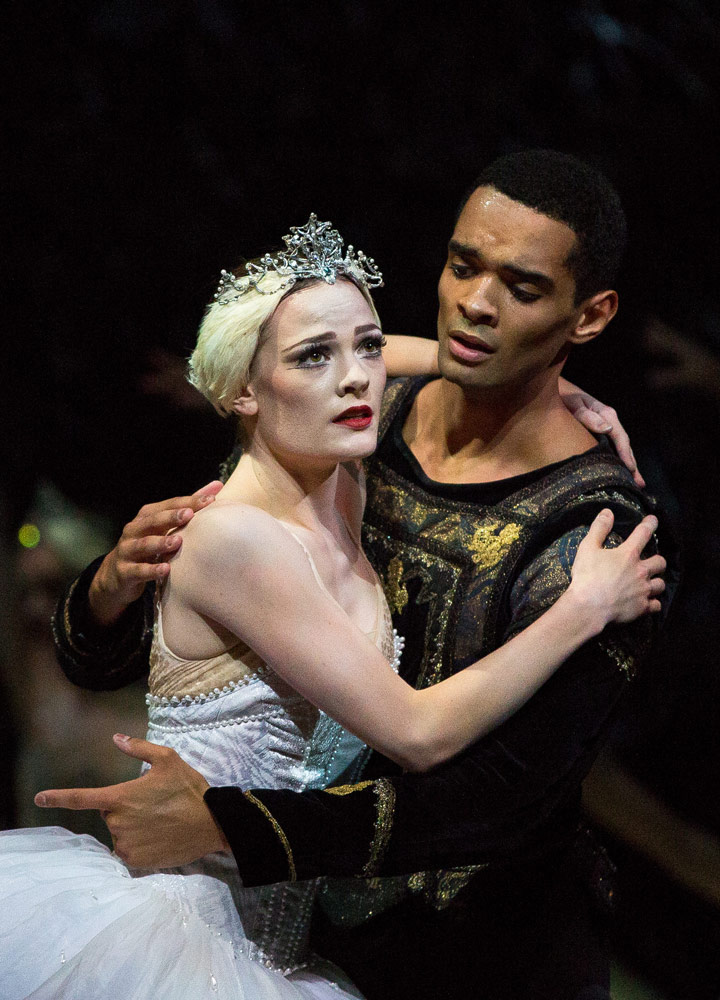
© Andrew Ross. (Click image for larger version)
The Royal Ballet debuts perhaps overshadowed some other emerging dancers performing a few days later for Birmingham Royal Ballet. Brandon Lawrence and Delia Matthews were the leads in Sir Peter Wright’s version of Swan Lake at Sadler’s Wells. Lawrence is elegant and beautifully proportioned and Matthews is very strong technically but most importantly they showed us a real and deep connection between the two of them. Wright’s is the most coherently told and convincing version of the narrative and it was a huge pleasure to see it again.
Fashion designer Hussein Chalayan gave us his first dance work, Gravity Fatigue, at Sadler’s in conjunction with the choreographer Damien Jalet. This was a decidedly oddball experience. It was an episodic piece of dance which ended rather than leading to any conclusion but there were some very striking moments on the way. When did you last see a modern work where the costumes were truly stunning? Chalayan really does know how to cut a skirt. There were white ones (sported by men and women alike) which flared and draped beautifully when the dancers spun, and they were accompanied by chic little capes that converted to sparkling trains. It was weird but interestingly so.

© Dave Morgan, courtesy the Royal Opera House. (Click image for larger version)
Also in October Carlos Acosta’s new Carmen was unveiled by the Royal Ballet. As I mentioned earlier it was a disappointment.
November
Rambert put on one of their stronger triple bills at Sadler’s Wells this month, with the standout item a new work from Kim Brandstrup, Transfigured Night, set to the Schoenberg score. It was a pleasure to have live music for this. There was terrific dancing from the couples acting out various possible outcomes of their unfortunate situation (woman pregnant by another man) against a backdrop of a black-clad corps of dancers as the society that might condemn them. Dane Hurst was wonderful in all the pieces on this bill and it’s sad to hear he is leaving Rambert for pastures new.
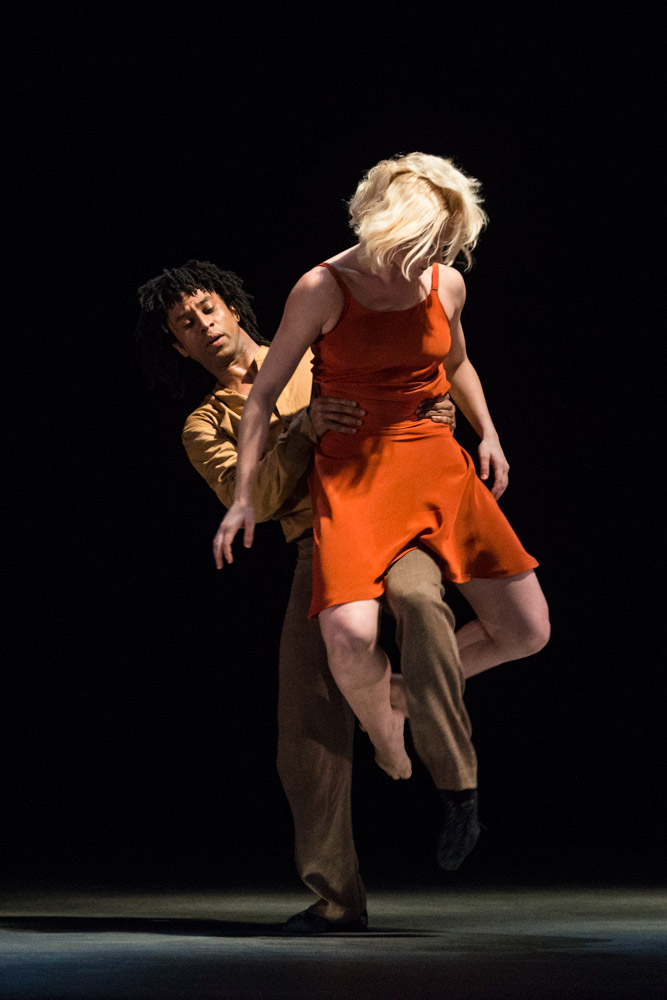
© Foteini Christofilopoulou. (Click image for larger version)
Royal New Zealand Ballet brought us a selection of items in their mixed bill at the Linbury but what really stuck in the mind was A Passing Cloud by Javier de Frutos. This is his third piece for the company, and he clearly knows them well. It is set to a collage of music from Pacifica culture, and the dance has hints of a tribal ritual. It’s great to see a company that really looks like a company in a piece that they indisputably own and obviously love.

© Evan Li. (Click image for larger version)
December
The great Carlos Acosta made his farewells as a classical dancer at the age of 42 to London audiences this month in a series of excerpts with some Royal Ballet colleagues at the Coliseum. The show is virtually a repeat of a version from a couple of years ago, but audience appreciation is undiminished. He even donned the gold miniskirt again for a romp through Diana and Actaeon with a visibly amused Marianela Nunez. His spins are still as crisp as ever even if his jumps are understandably not as utterly jaw-dropping as once they were. He received a standing ovation, earned not so much for that night’s endeavours but for all that the roles in which he has amazed and delighted us in the last seventeen years and the special place he has earned in the hearts of the audience.
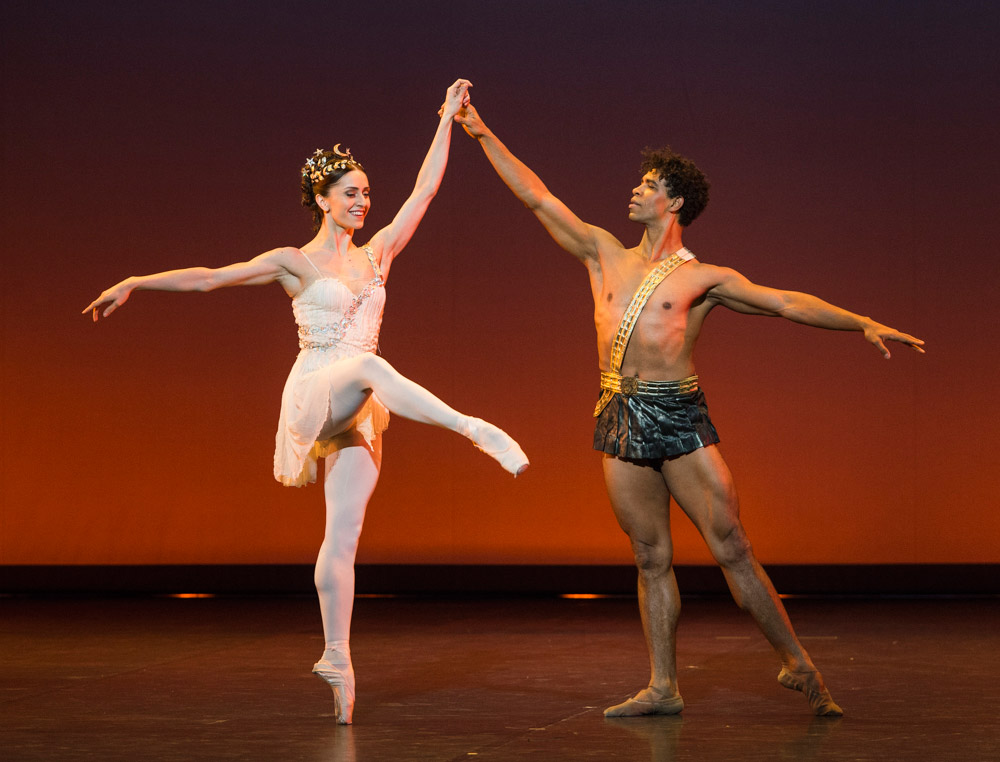
© Foteini Christofilopoulou. (Click image for larger version)












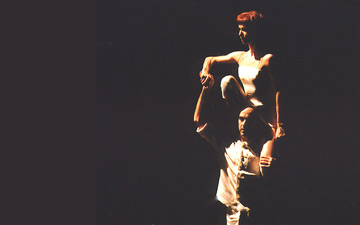
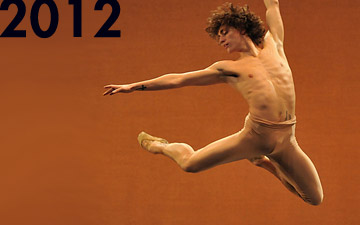

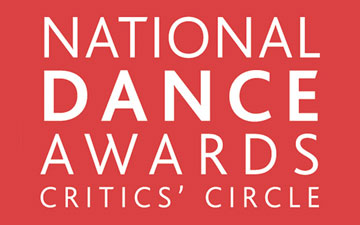
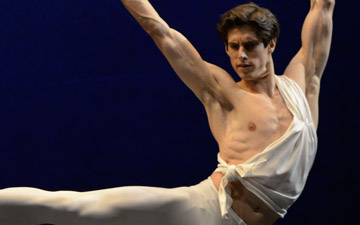
You must be logged in to post a comment.